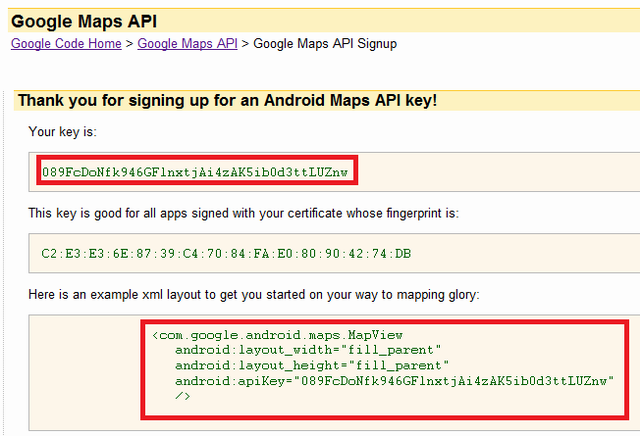Creating a Google Maps API Key
※ Download: Generate google maps api key
If you have trouble displaying Google maps on your site, please verify that the Google Maps Javascript API is enabled in the. Allow any subdomain URLs in a single domain. You can read more about the pricing changes.

If you have enabled billing but keep seeing this error, then you can contact. If you expect your application to host Google Maps content from more than 3000 locations, you should switch to using API keys instead. It allows to show maximum info about your business and has automatic route calculation to attract more real-life visitors.

How do I generate a Google API Key? - Start plotting right away and customize a multitude of features as you go. Click on the Create Credentials button on the Credentials window Generate Your API Key Click on API Key on the next pop-up window.

To learn more about authenticating to a GCP API, see. For information about setting up API keys for Google Maps, see the. Note: Do not use API keys for local or production applications, except in the specific cases described below. For almost all cases, you should use. API keys are a simple encrypted string that can be used when calling certain APIs that don't need to access private user data. API keys are useful in clients such as browser and mobile applications that don't have a backend server. The API key is used to track API requests associated with your project for quota and billing. Because of this we recommend. However, there are limited cases where API keys are more appropriate. For example, if you're developing a mobile application that needs to use the Google Cloud Translation API, but doesn't otherwise need a backend server, API keys are the simplest way to authenticate to that API. In most cases, we recommend having your application communicate to a backend server that handles authenticating to, and calling, Google Cloud Platform services. For more information, see. The API key created dialog box displays your newly created key. You might want to copy your key and keep it secure. Unless you are using a testing key that you intend to delete later, add. Using an API key Pass the API key into a REST API call as a query parameter with the following format. Publicly exposing your credentials can result in your account being compromised, which could lead to unexpected charges on your account. API keys that are embedded in code can be accidentally exposed to the public. For example, you may forget to remove the keys from code that you share. Instead of embedding your API keys in your applications, store them in environment variables or in files outside of your application's source tree. If you store API keys in files, keep the files outside your application's source tree to help ensure your keys do not end up in your source code control system. This is particularly important if you use a public source code management system such as GitHub. By adding restrictions, you can reduce the impact of a compromised API key. You can regenerate API keys from the by clicking Regenerate key for each key. Then, update your applications to use the newly-generated keys. Your old keys will continue to work for 24 hours after you generate replacement keys. Ensure that your code does not contain API keys or any other private information before you make your code publicly available. Adding restrictions to API keys An API key is unrestricted by default. Unrestricted keys are insecure because they can be viewed publicly, such as from within a browser, or they can be accessed on a device where the key resides. For production applications, set both application and API restrictions. The restrictions section appears at the bottom of the page. Application restrictions Application restrictions specify which web sites, IP addresses, or apps can use an API key. Add application restrictions based on your application type. You can only set one restriction type per API key. To add more than one value for any restriction, type the first value, and then press the Enter key. Repeat to add values. These types of applications expose their API keys publicly, so we recommend using a instead. This option requires adding your package name and SHA-1 signing-certificate fingerprint. This option requires adding at least one iOS bundle identifier to restrict API calls to specific iOS bundles. Repeat to add values. The following table shows example scenarios and restrictions, from most restrictive to least restrictive. We recommend using the most restrictive example that fits your use case. Scenario Restrictions Allow a specific URL. Add a single restriction with an exact path. You must set at least two restrictions to allow an entire domain. Allow any subdomain URLs in a single domain. You must set at least two restrictions. API restrictions API restrictions specify which APIs can be called using the API key. All API keys that are used in production applications should use API restrictions. Viewing existing API keys Use GCP Console to view your existing API keys. After navigating to the panel in GCP Console, existing API keys display underneath the API keys header. Last updated October 12, 2018.
Detailed guide for Premium Plan customers When using the Maps JavaScript API with ayou must authenticate your application with either an API key or a client ID. You can read more about the pricing changes. This tutorial will show you how to do that. Google Maps API key is used to access Google Maps API. In that menu, click on 'SEO'. Browser API Key The browser API key is used when data is requested from the. Another common issue is that a grey map in combination with a broken start location field is shown on the settings page. Last updated October 12, 2018.



